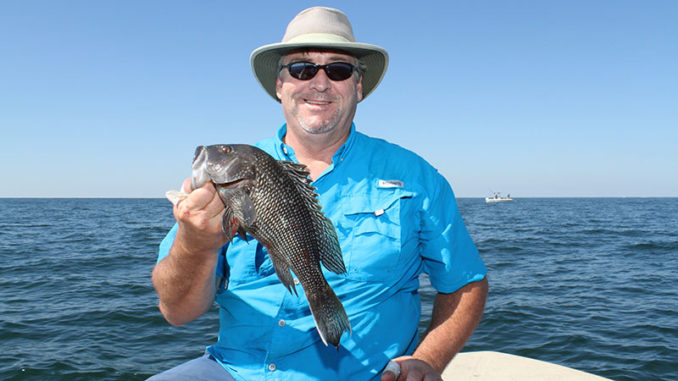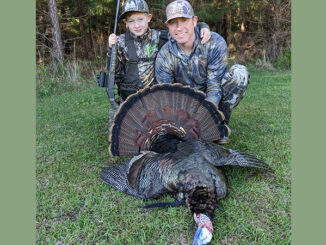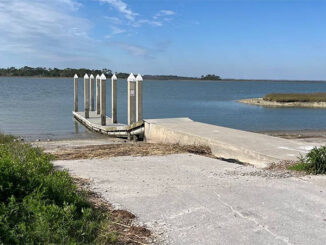
Lowcountry reefs giving up super-sized black sea bass
Black sea bass are often thought of as nuisance fish for anglers targeting more desirable species. But Capt. Buddy Bizzell of Edisto Palmetto Charters (803-603-2781), targets these fish on numerous nearshore reefs out of Edisto Beach.
“These aren’t the small, bait thieving black sea bass that hold you back from catching bigger fish. These are keeper-sized fish with a lot of meat on them, as well as a lot of fight,” said Bizzell.
Just about any type of cut bait will work just fine, and Bizzell uses a trick from spadefish anglers to keep the black sea bass interested.
Before heading offshore, Bizzell collects a handful of cannonball jellyfish, which he strings together and lowers to the bottom once at the reefs.
“Everyone thinks of spadefish when they hear about doing this. But it actually attracts and holds a number of different species, including black sea bass,” he said.
And sometimes, spadefish will even show up and begin to bite, even though most anglers think of spadefish only being around during spring.
Watch for other species
Numerous other bottom species will also show up, and Bizzell said it’s not at all uncommon to realize that cobia are all around the boat after a while. That’s one reason he always has a rod onboard that’s appropriate for catching these big, curious fish.
“But the black sea bass bite is very consistent right now, and these are quality fish,” he said. “You don’t have to weed through many throw-backs to find keepers,” he said.
To get the black sea bass interested, Bizzell threads a piece of shrimp or other cut bait onto a 2-ounce bucktail jig, then sends it to the bottom.
“Some days, depending on current, you might have to bump it up to 4 ounces,” he said. “If your baits are getting hit hard while its dropping, those are genrally smaller fish that aren’t big enough to get the hook in their mouths. So using a bigger, heavier jig will race down faster than they’ll chase it, leaving the piece of bait intact until it gets to the bottom, where plenty of black sea bass are waiting.”





Be the first to comment